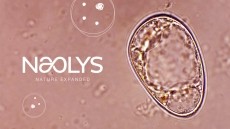Calcium-containing nanoparticles could tackle common skin allergy
Scientists at Brigham and Women's Hospital (BWH) in Boston Massachusetts made the discovery whilst testing various methods of dealing with nickel-induced dermatitis.
Jeffrey Karp, leader of the work, along with R. Rox Anderson, a dermatologist from Massachusetts General Hospital, and other colleagues, have found that nanoparticles containing calcium could offer a safe solution to the problem.
They claim that when applied to the skin in a cream, much like a hand cream, the nanoparticles efficiently capture the nickel, preventing it from making its way into the body.
Furthermore, the nanoparticles themselves were designed so that they cannot penetrate the skin. The cream with its nickel can then be easily washed off with water.
"Despite barrier creams, anti-inflammatory drugs, and attempts to avoid nickel, this is still the most common cause of allergic skin reactions. Nanoparticles that bind to allergens but do not penetrate the skin offer a new strategy,” explains Anderson.
Focus on compounds containing calcium
The scientists explain that they began the study by focusing on compounds containing calcium, which are known to sequester nickel and explored whether these compounds were available as nanoparticles, and then limiting the search to a specific size range.
"We wanted them to be large enough so they could not penetrate the skin, yet small enough to present a very large surface area for capturing nickel," Praveen Kumar Vemula of Brigham and Women's Hospital said.
To cut the time involved in bringing a new technology to market, the team ensured it only explored nanoparticles already designated by the Food and Drug Administration as being generally recognized as safe for use in humans.
They found two compounds that met these criteria which were calcium carbonate and calcium phosphate, and added them to a common emollient to create a cream, and tested them under a variety of experimental conditions.
Karp explained that the team was able to demonstrate that the particles could capture nickel with high efficiency and that all results "suggest that nanoparticles can effectively prevent the penetration of nickel into the skin, and may therefore abrogate nickel-induced contact dermatitis."
There has not been one effective solution
A report was published in the April 3 online issue of Nature Nanotechnology from the Harvard teaching medical school, explaining how there has not been one effective solution to the common skin allergy.
"There have been approaches to developing creams with agents that bind the nickel before it can penetrate the skin, but these are not effective in most patients and can even be toxic when the agents themselves penetrate the skin, as most do," says Jeffrey Karp, leader of the study and co-director of the Center for Regenerative Therapeutics at BWH.
Approximately ten to fifteen percent of the US population, as well as many more worldwide, are allergic to the nickel found in many everyday objects. For these people the metal causes a red, itchy rash when it comes into contact with their skin.
"People also sometimes coat their jewelry with nail polish to create a barrier between the skin and nickel ions, but this won't prevent all exposures, such as handling coins or wearing a watch," Karp added.















